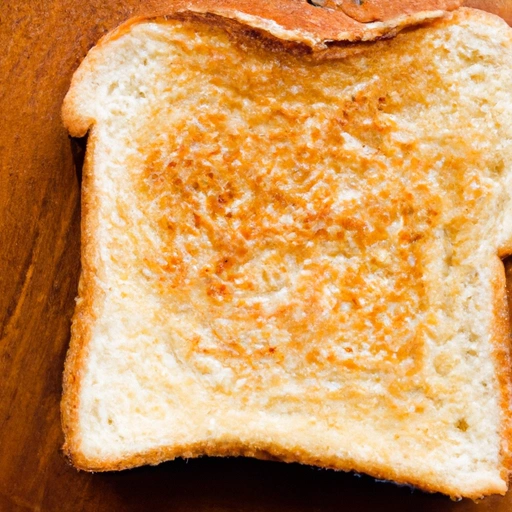Toast
Description

Toast represents one of the simplest and most fundamental food ingredients enjoyed across the world. It begins as a slice of bread, which is then browned by exposure to radiant heat, a process that results in a firmer texture and a mild change in flavor due to the Maillard reaction. Toast can be made from a variety of bread types, including white, whole wheat, rye, sourdough, and multigrain, making it a versatile component in numerous dishes. While it is commonly used in American and European cuisine, toast has made its way into various cultural dishes and is beloved for its accessibility and ease of preparation.
Common uses
Toast is commonly used as a base for spreads such as butter, jam, honey, and peanut butter. It also serves as an essential component for dishes like sandwiches, avocado toast, French toast, and as a side for eggs and bacon. In addition, it is often used as a crunchy element in salads, a binder in meatloafs and casseroles, or as a simple snack with various toppings.
Nutritional value
Calories
A typical slice of toast, which is 1 ounce or about 28 grams (g), contains approximately 75 to 100 calories, depending on the type of bread used.
Protein
Protein content in toast is usually around 2 to 4 grams per slice, with whole grain options providing a slightly higher amount due to the presence of more varied grains.
Fat
Toast itself contains minimal fat, typically less than 1 gram per slice, unless additional fat is added through toppings like butter or avocado.
Carbohydrates
Carbohydrates in toast range from 12 to 15 grams per slice, with whole grain breads at the higher end of this range due to their additional fiber content.
Vitamins
Depending on the type of bread, toast can include a range of B vitamins, particularly if it's made from fortified or whole grain bread.
Minerals
Minerals such as iron, magnesium, and selenium may be present in toast, varying with the type of bread and the amount of enrichment it has undergone.
Health benefits
Whole grain toast can be part of a healthy diet, providing essential fiber for digestive health, B vitamins for energy metabolism, and minerals for various bodily functions. The fiber content can also aid in maintaining a healthy weight and lowering cholesterol levels.
Potential risks
Consuming toast made from white bread, which is high in refined carbohydrates and low in fiber, may contribute to blood sugar spikes and weight gain when eaten in excess. Additionally, some individuals with gluten sensitivity or celiac disease must avoid toast made from traditional wheat-based breads.
Common recipes
Toast is used in recipes such as bruschetta, crostini, club sandwiches, and as a crunchy topping for macaroni and cheese when crumbled into breadcrumbs.
Cooking methods
The most common method of making toast is using a toaster, but it can also be made using a grill, a broiler, or a stovetop skillet. Each method provides a different level of crunchiness and char, which can be suited to personal preference or specific recipes.
Pairing with other ingredients
Toast pairs well with both sweet and savory toppings. Classic pairings include jam and butter for a sweet option or avocado and poached egg for a savory dish. It also complements soups and salads by providing a textural contrast.
Summary
Toast is a universally beloved food that stands as a testament to the beauty of simplicity in cuisine. It has a rich history, dating back to ancient times, and has evolved to become a staple in kitchens around the world. Whether used as a quick breakfast option or as a component in a complex dish, toast offers a comforting texture and flavor that can be tailored to an array of dietary preferences and culinary techniques.